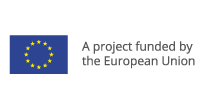Diversifying energy sources in the MENA region

Global energy demand is set to rise by 25% between 2014 and 2040, according to ExxonMobil. To keep pace with demand In the Middle East and North Africa (MENA) region, an annual expansion of 8%, has been forecast between 2016 and 2020. An additional power generation capacity of 267 gigawatts (GW) or nearly 66% is likely to be required by 2030. Governments in the MENA region have realized the need to diversify energy sources, with many countries integrating clean energy into power generation targets, and renewables increasingly playing an important role.
Natural gas, as the primary source of fuel for the power generation, is set to become a top contributor to the energy mix. Many countries are exploring how they can increase the use of natural gas to generate power, often preferring it over renewables. Saudi Arabia, the world’s top oil exporter is planning to increase the power generation from gas from 50% to 70%. Egypt which is trying to double its power generation capacity by 2020, aims to generate about 20% from renewables by 2022 and is currently building what will be the largest gas-fired combined cycle power plants in the world when completed. Other countries such as Kuwait, Qatar and the U.A.E. are also investing in a new generation of power plants.
Solar power is increasingly making up a good portion of renewable energy targets. Although it will not replace hydrocarbons as the primary energy source, according to the research firm Stratfor, solar power has a bright future in the region. Recent technological innovations in solar power generation are prompting governments to invest in the sector. Saudi Arabia is planning to generate at least 10% of its power from solar. The U.A.E. is constructing the largest single-site solar park in the world, set to produce about 1000 megawatts (MW) of power by 2020. Several other countries such as Morocco, Jordan and Tunisia are equally engaging in ambitious solar projects.
Nuclear power is also on the rise in the MENA region. The U.A.E. has already put its nuclear energy plans in motion with the country’s first nuclear energy plant set to be operational by 2020. The aim si to deliver up to a quarter of the country’s electricity needs. Saudi Arabia has ambitious plans to construct 16 nuclear reactors by 2040. Elsewhere in the region, Algeria, Tunisia and Morocco have had research reactors for meany years, while Jordan and Egypt have recently signed a deal with Russia to build nuclear reactors.



